

Blog

My favourite place in the Girona regions? Ask me an easier question, please.
Seven days to experience a destination full of natural treasures. To discover beaches and mountains. To enjoy art, culture and sport. To sample one of the world’s finest cuisines. A week to do the things you love most and connect with a region you will never forget.

Jardins de Santa Clotilde, Lloret de Mar. Arxiu Lloret Turisme.
The Girona counties truly have it all. It may fly by, but seven days will give you time to discover some of the region’s most unique scenery, visit some of its most picturesque towns and indulge your passions. This is a destination of many charms, some of which are, frankly, unmissable. Choose your favourites and design your ideal seven day trip to the Costa Brava and Girona Pyrenees.
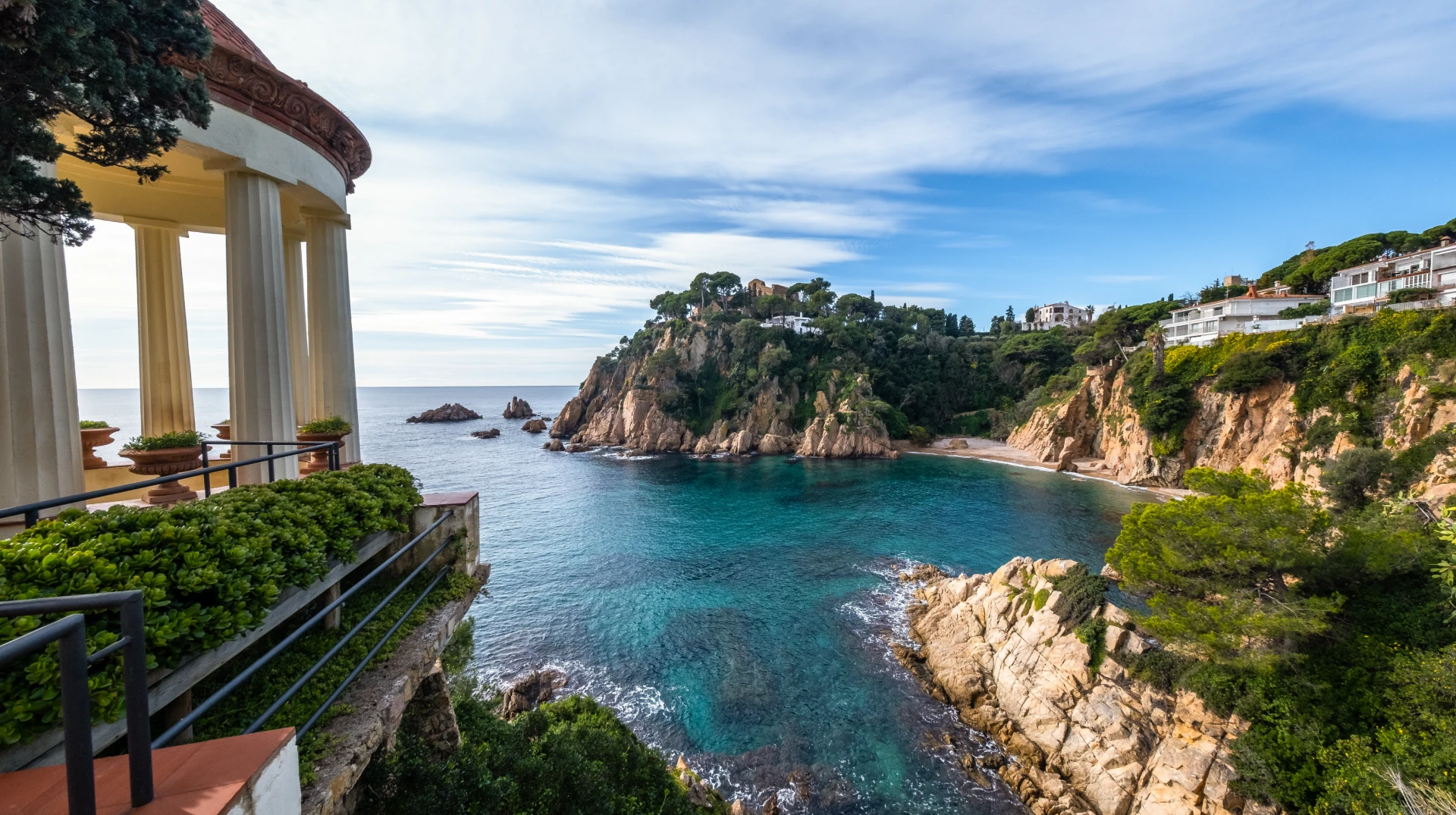
Jardí Botànic Marimurtra. Miquel Millan. Arxiu Imatges PTCBG.
The southern part of the Costa Brava holds the key to a glorious experience: a visit to a botanical garden. A combination of art, scenery, nature, gardening and architecture beside the sea. Enjoy a stroll among the beautiful plants, with spectacular views of the Mediterranean and a wealth of curiosities to discover. In Blanes: the Marimurtra and Pinya de Rosa botanical gardens. In Lloret de Mar, the Santa Clotilde Gardens. And further north, between Calella de Palafrugell and Mont-Ras, the Cap Roig Gardens.
Culture, history, sea, beach, nature… Tossa de Mar offers a blend of some of the Costa Brava’s most highly prized ingredients. Here you have one of the most beautiful picture-postcard parts of Girona coastline, with the medieval walled area set in a privileged location next to the sea. As you wander the narrow streets of Tossa de Mar’s old town you will be transported back to the Middle Ages. And find out why there is a statue of Ava Gardner in the town along the way.

Illa Roja, Begur. Julien Collet. Arxiu Imatges PTCBG.
Small unspoilt coves where you are sure to lose all track of time. Beaches of golden sand and crystal-clear waters. Verdant pine forests and sparkling blue sea. Steep cliffs lapped by the Mediterranean. The scenery of Begur and Palafrugell is utterly impossible to resist. And to top it all, don’t miss the panoramic views from the Sant Sebastià lighthouse in Llafranc for an unforgettable snapshot of the Costa Brava.
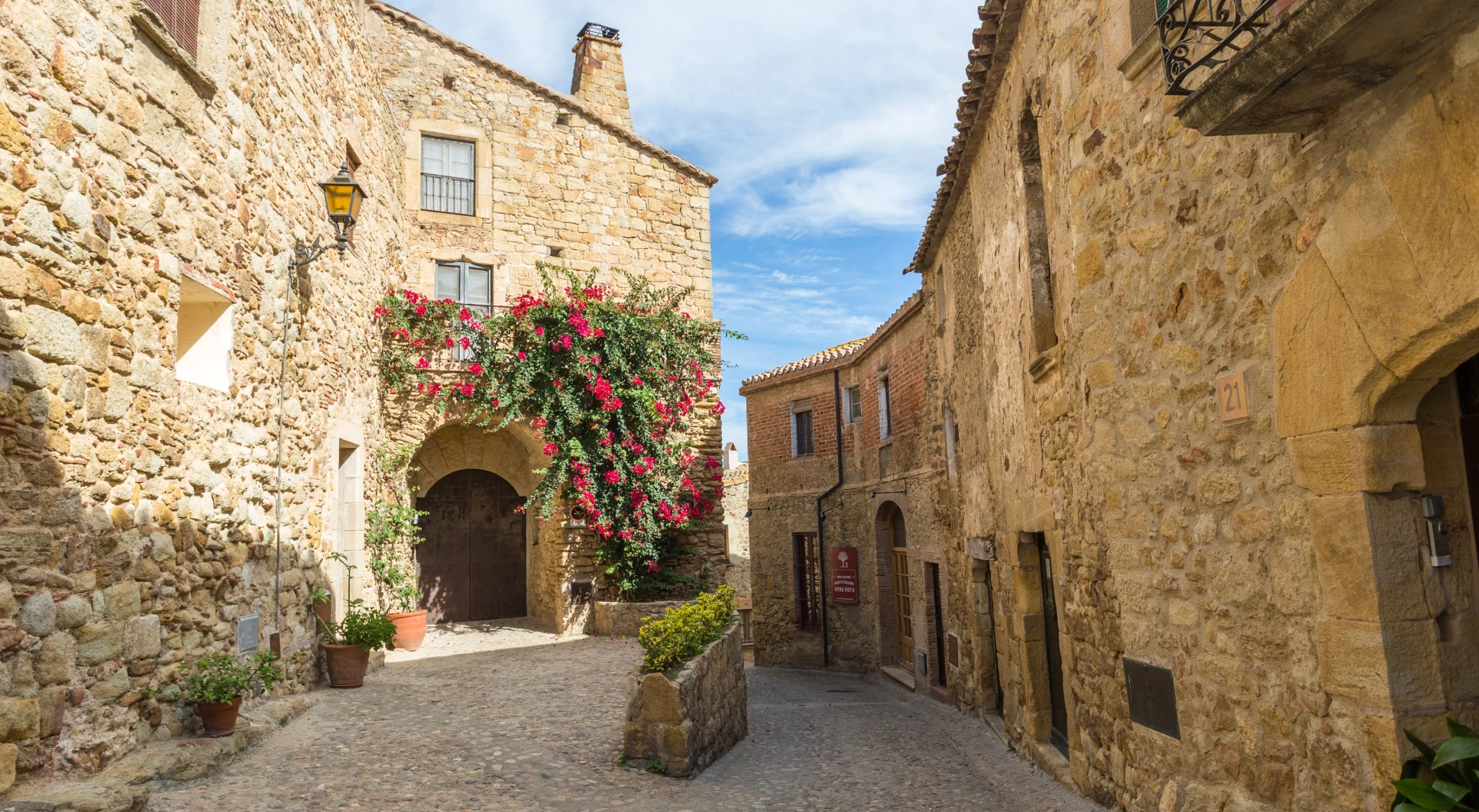
Pals. Laurence Norah. Arxiu Imatges PTCBG.
Stepping back in time is easy on the Costa Brava. The medieval towns of Pals and Peratallada transport you more than a thousand years into the past, with much of their original appearance and architecture still intact. Walls, watchtowers, porticoed squares, cobbled streets and a host of historically and artistically important buildings and monuments. If you are in two minds about which to visit, not to worry, they are just a stone’s throw away from each other so why not explore both?

Escala, Ruines Empuries. Rafa Pérez. Arxiu Imatges PTCBG.
The Baix Empordà region has plenty of charms that will tempt you to linger for a few days and sample some of its cultural proposals. In addition to exploring Pals and Peratallada, here is a selection of others:
Visit the ceramic capital, Bisbal d’Empordà, famous for its great craft tradition and the quality of its clays.
Explore the Iberian city of Ullastret, one of the most important Iberian urban complexes in Spain and visit its museum to travel more than 2,500 years into the past.
Relive the arrival of the Greeks and Romans at the Empúries Ruins, an archaeological site set beside the sea where the remains of the Greek city of Empòrion and the Roman city of Emporiae have been unearthed.

Cap de Creus, Cala Culip. Dani Salvà. Arxiu Imatges PTCBG.
This special place, where the Pyrenees meet the Mediterranean Sea, is home to a unique set of ecosystems and protected natural landscapes that include a variety of marine reserves. Cap de Creus is a wild and, sometimes, inhospitable-looking place, with rugged cliffs and rock formations sculpted by waves and wind over the course of millions of years. It provides the gateway to a truly magical travel experience, however, whether it is enjoying a swim at one of its secluded coves or beaches, a visit to a quaint fishing town, such as Cadaqués, Llançà or Port de la Selva, or indulging in a spot of scuba diving, hiking, cycling or other activity.
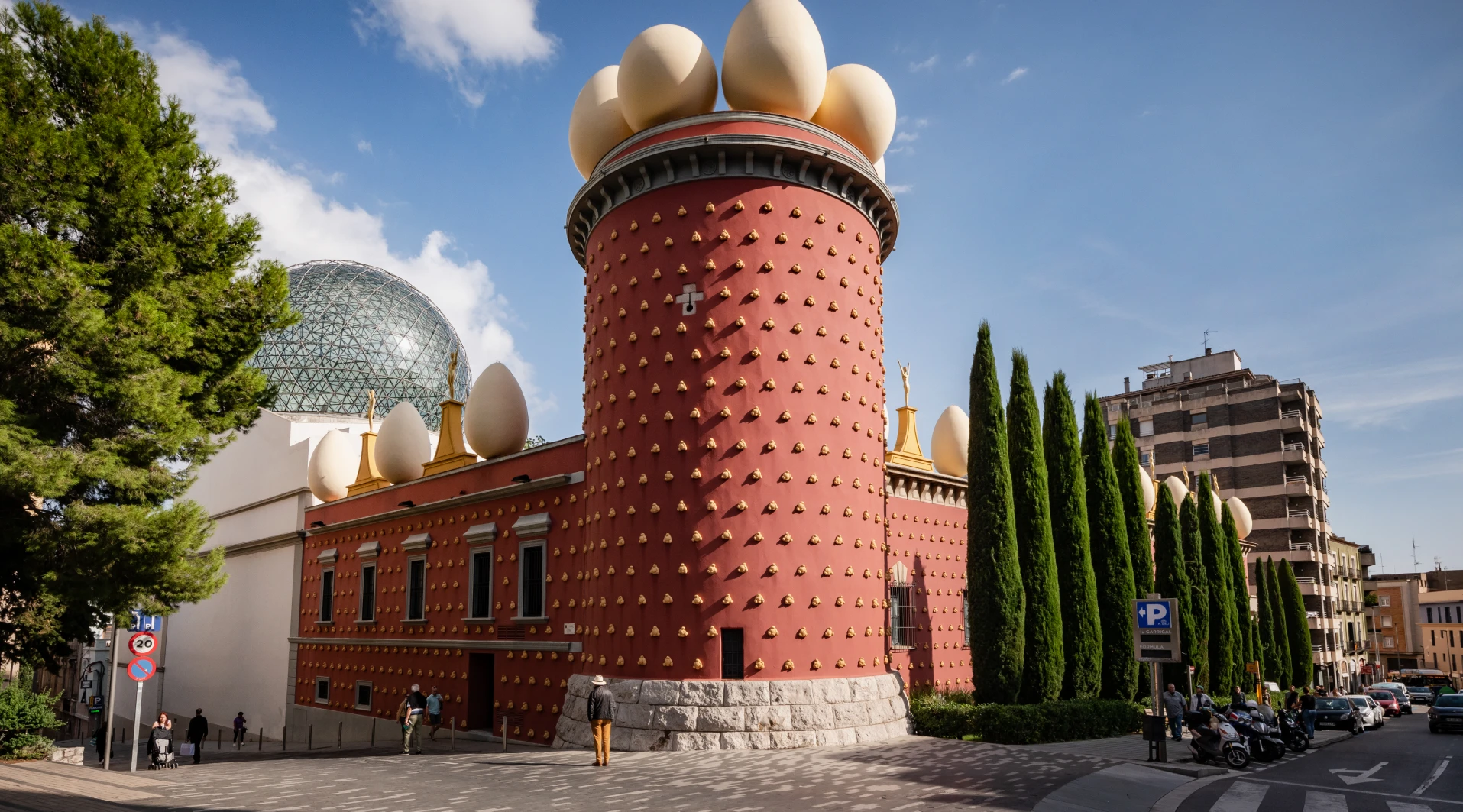
Teatre-Museu Dalí, Figueres. Josep Algans. Arxiu Imatges PTCBG
If you were to pick up a map of the Empordà and draw an imaginary line between the towns of Figueres, Púbol and Portlligat (Cadaqués) you would be sketching what is known as the Dalí Triangle, a route consisting of three sites that will transport you into the impassioned world of the artist, Salvador Dalí, whose life and work were inextricably linked with this region.
The Dalí Theatre-Museum in Figueres is the world’s largest surrealist objet d’art, conceived and designed by Dalí himself, and an essential museum to learn about all the artistic spheres he explored.
Gala Dalí Castle in Púbol is a medieval castle that the artist gave his wife as a gift and that he turned into a place full of beauty and surprising works of art.
Salvador Dalí House in Portlligat, set in the heart of Cap de Creus Natural Park, is the residence that Dalí and Gala created through the conversion of a group of old fishermen’s huts.
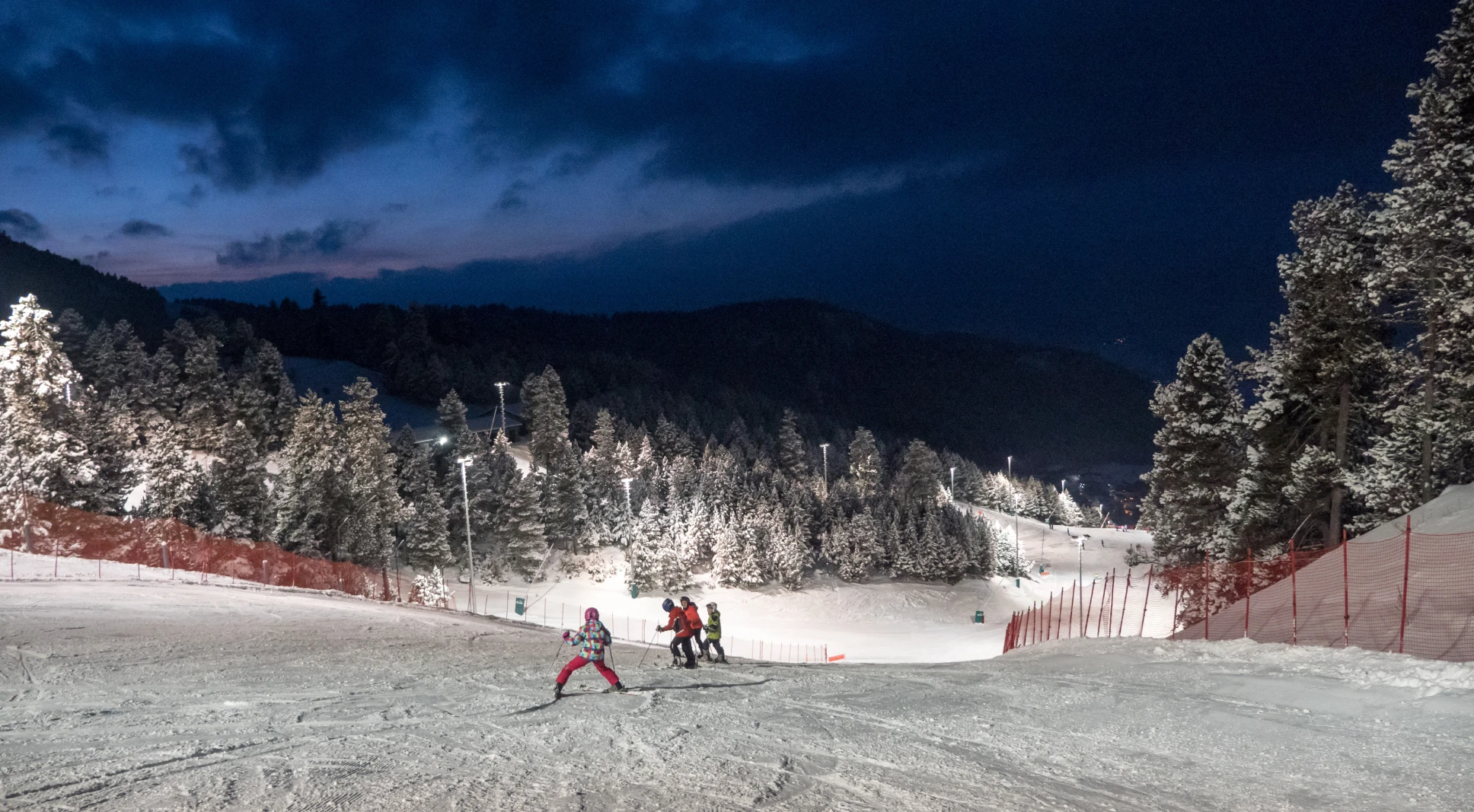
Estació d'Esquí Masella. Laurence Norah. Arxiu Imatges PTCBG.
If you’re planning to visit the Costa Brava in winter, make sure you set aside some time for some skiing. When the mountains are blanketed in snow, skiing becomes the number one attraction in the regions of Cerdanya and Ripollès, with a choice of five ski resorts offering a range of Alpine and Nordic skiing opportunities. La Molina and Masella are two of the longest-standing and most popular, which together form Alp 2500, boasting 145 km of slopes. And if you’ve always wanted to try a spot of night skiing under the stars, now is your chance at the Masella resort. An unforgettable experience not to be missed!
It’s not all skiing in La Molina-Masella. The resort offers activities so you can enjoy it throughout the year. The downhill circuits for mountain bikers of all levels are just one example. You can also go up to the Cadí-Moixeró chairlift, to visit the Niu de l’Àliga refuge, at 2,537 metres, and enjoy the magnificent views of La Cerdanya, Berguedà and Ripollès. As well as this, you have the nature route and the mines route, circular trails to do on foot where you can discover the wildlife of the territory, or the old mining past of La Molina.
Vall de Núria is synonymous with hiking, scenery and mountains. An idyllic place 2,000 metres above sea level that, beyond the asphalt, can only be reached on foot with a tough, close-to-four-hour-long climb, or via a highly recommended rack railway trip. Whichever route you decide to take, this stunning, family-friendly destination boasts a fantastic shrine, a lake flanked by mountains soaring to almost 3,000 metres high and numerous hiking opportunities.
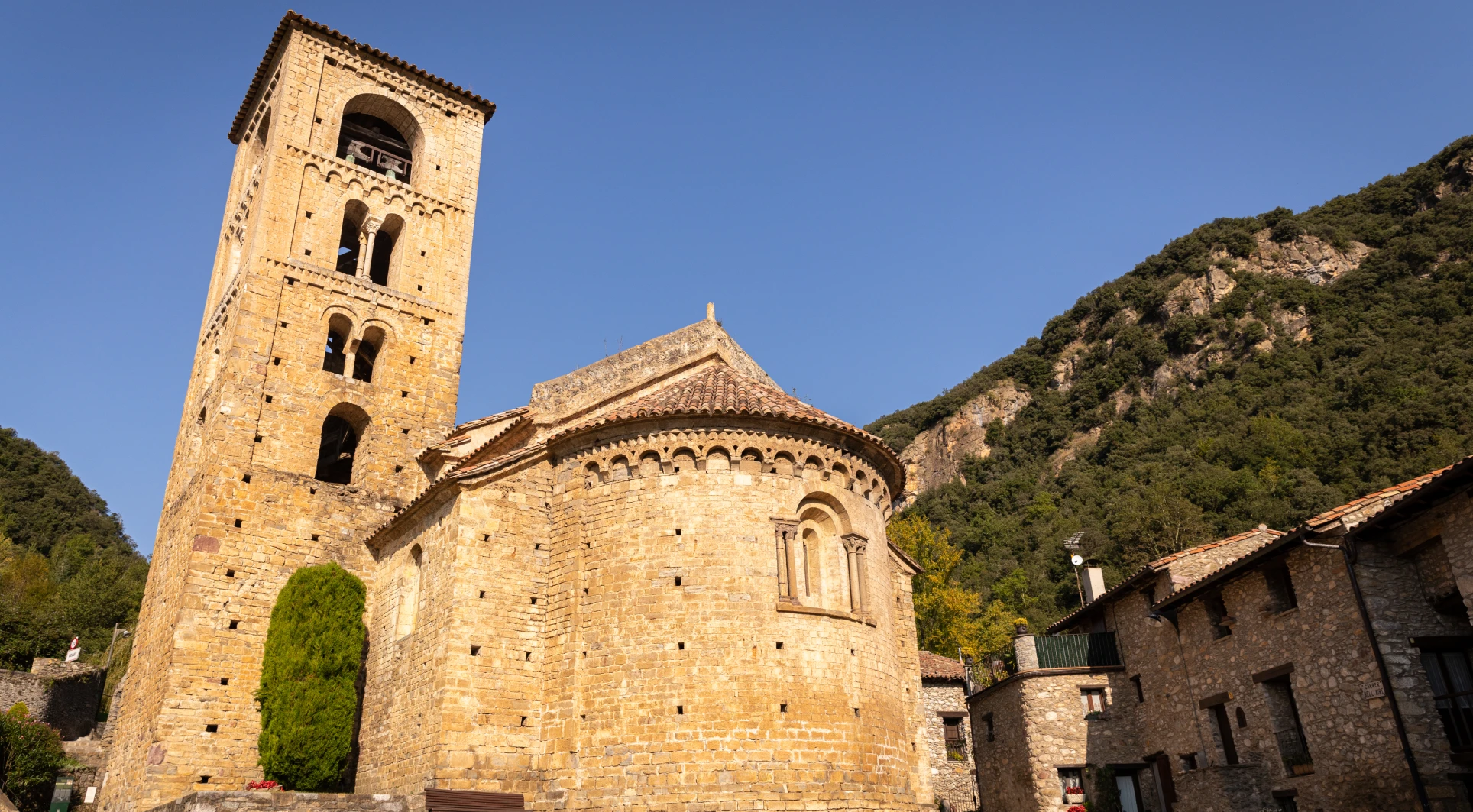
Beget. Eudald Rota. Arxiu CCRipollès. Arxiu Imatges PTCBG
The town of Camprodon gives its name to this beautiful valley that boasts the picturesque villages and high mountain landscapes of the Ripollès region, as well as being endowed with a host of cultural and historical treasures, such as the Capsacosta Roman Road, the Pont Nou bridge, the monastery of Sant Pere de Camprodon, the churches of Sant Martí de Vilallonga de Ter and Santa Cecília de Molló, among many others. The Vall de Camprodon valley is also one of Catalonia’s main mountain sports centres offering cycling, hiking, mountaineering and skiing at the Vallter resort.
Two mountain towns with bags of charm. Two places to enjoy the pure tranquillity of the Pyrenees. Two heavenly spots in Alta Garrotxa where you can immerse yourself in wonderful nature, walks and day trips. Oix and Beget are all this and more, as guardians of a treasure trove of magnificent cultural attractions. Those on offer in Oix include the ruins of Barutell Castle, a large, fortified building that dates back to the fifteenth century, as well as the town’s picturesque medieval bridge. And Beget is home to one of the jewels of Catalan Romanesque architecture in the form of the tenth century Church of Sant Cristòfol, which houses the famous Christ in Majesty wooden carving.
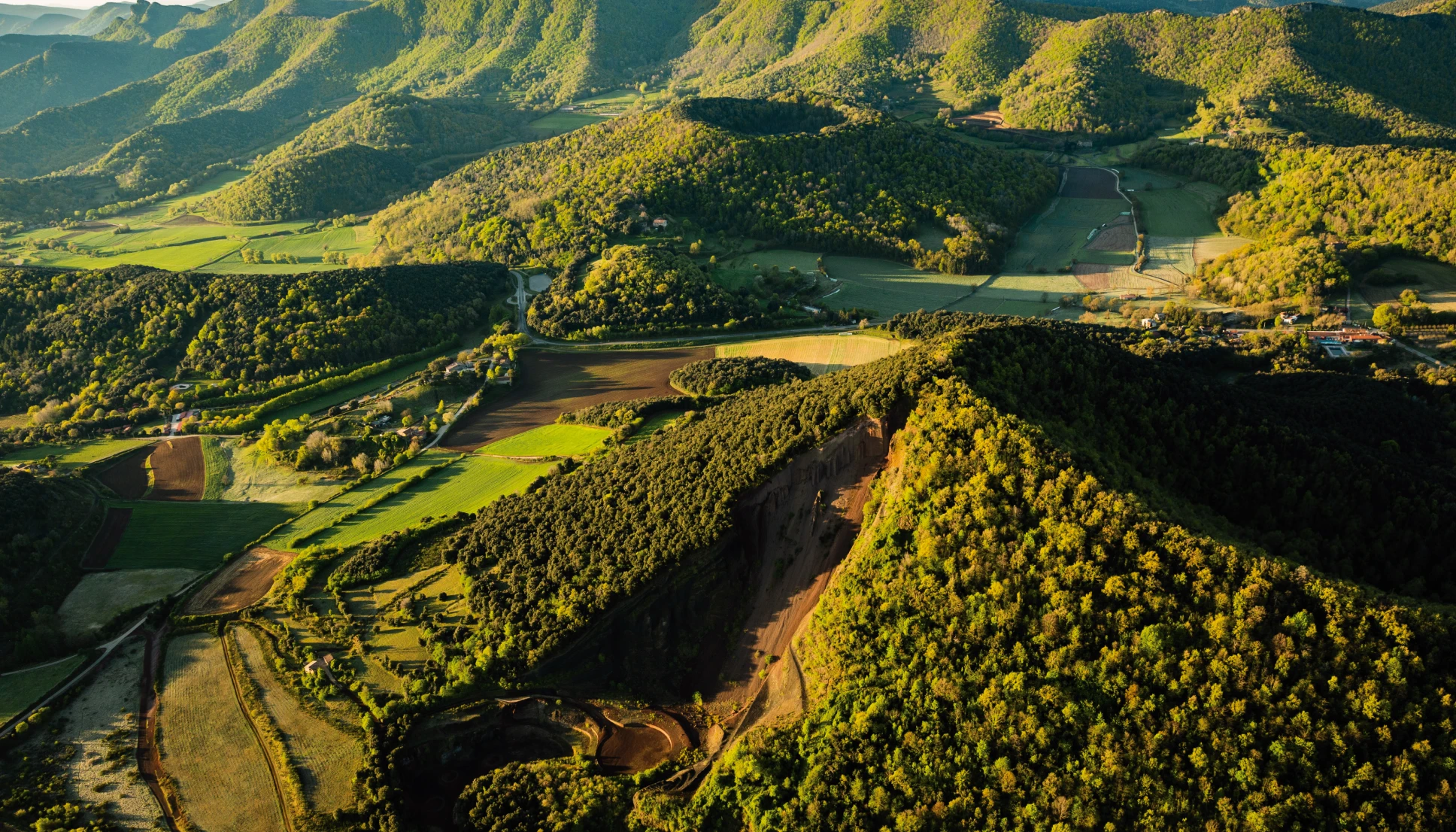
El Croscat, Santa Pau. Eduard Sánchez-Ribot. Arxiu Imatges PTCBG
A true natural treasure with forty volcanic cones and more than 20 lava flows, which today form a verdant landscape covered with extensive beech, holm and oak forests. The perfect place to explore on foot, roaming the numerous signposted walking trails that will introduce you to emblematic spots, such as the Fageda d’en Jordà beech forest, the Croscat volcano and the Santa Margarida volcanic crater.
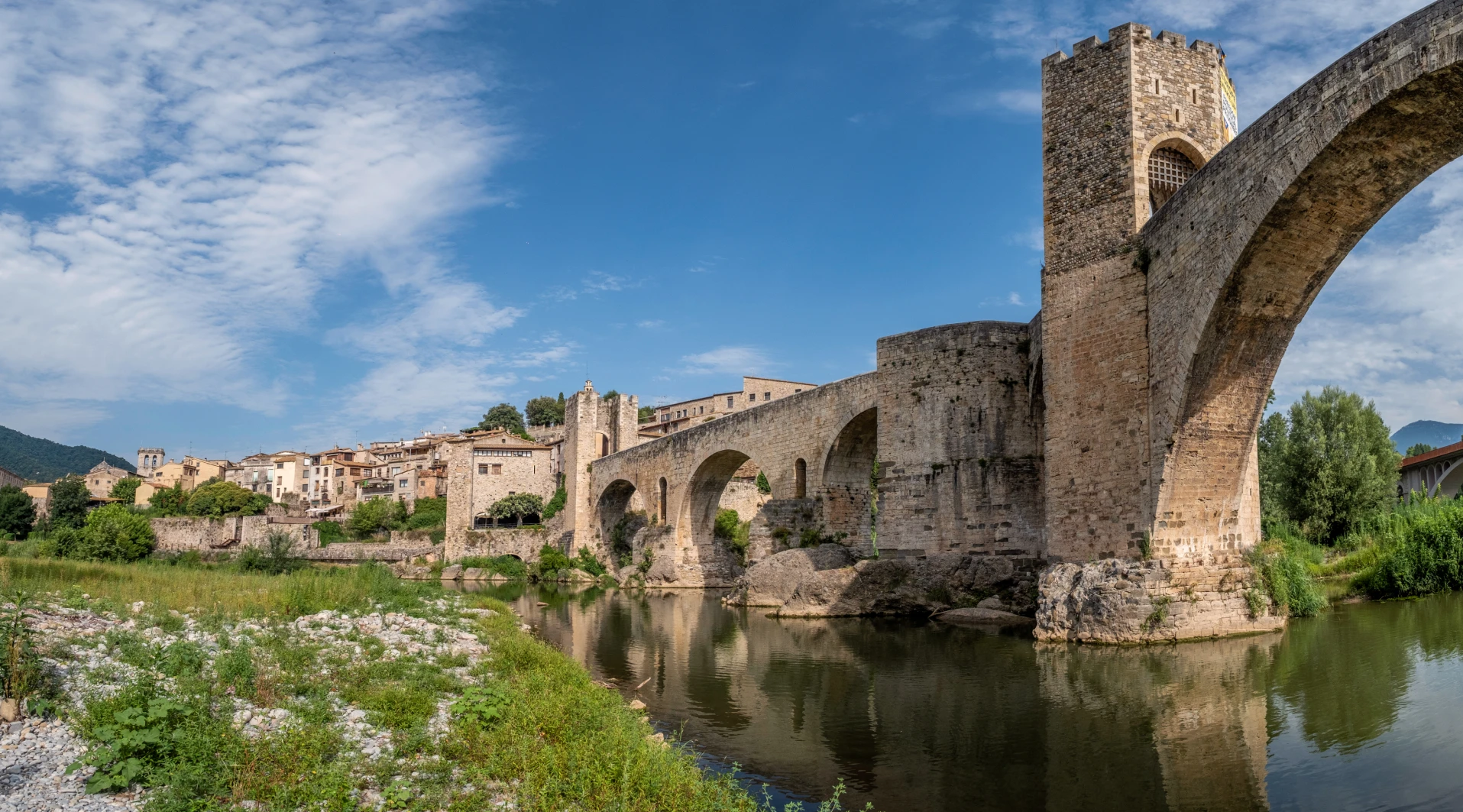
Besalú. Jordi Renart. Arxiu Imatges PTCBG
The iconic silhouette of Besalú bridge is one of the most-photographed pieces of Catalan historical heritage and serves as an excellent entrée to the delights this Garrotxa village has to offer. The historic centre is home to a whole host of medieval treasures to be savoured at a leisurely pace, many of which can be found in the old Jewish Quarter. Wander the maze of narrow streets to discover an ancient Jewish ritual bath house, or mikvé, one of the few examples of its kind in the world.
The largest natural lake in Catalonia is a fascinating geological phenomenon, fed by waters that emerge from the ground at the end of a slow almost year-long journey from the neighbouring mountains of Alta Garrotxa. It is a vibrant space, which can be enjoyed by everyone in their own way. There is a seven-kilometre-long trail that runs all the way around the shoreline, with many idyllic spots to contemplate the native fauna and flora, as well as a selection of swimming areas. Banyoles Lake is also a prime destination for sports enthusiasts as an ideal place to enjoy activities such as swimming, cycling, triathlon training, rowing and canoeing.

Girona. Sherry Ott. Arxiu Imatges PTCBG.
A city rich in history, with vestiges of a great Roman fortress, the Força Vella, dating back more than 2,000 years. With its old patrol route that traces the walls of the medieval city. Its Call district, one of the best-preserved Jewish quarters in the world. The majestic Girona Cathedral, built between the eleventh and eighteenth centuries, where Romanesque, Gothic and Baroque areas stand shoulder to shoulder. With the Arab Baths, the Benedictine monastery of Sant Pere de Galligants and many other historical elements that bear witness to times gone by.

L'Estartit. Xènia Gasull. Arxiu Imatges PTCBG
Let’s synchronise calendars. When did you say you were looking to visit Girona? It’s worth glancing through the extensive list of musical and artistic events scheduled to take place in the Costa Brava and Girona Pyrenees region before you go, as this is a land of festivals where there’s always something going on. Music, theatre, dance, circus, cinema… You will find it all, especially in the spring and summer months, and in a host of magical settings, such as a botanical garden, medieval castle or an Empordà beach.

Celler Martin Faixó. Travel Dudes. Arxiu Imatges PTCBG
You could take a thematic trip around the Girona region to trace the legacy of Romanesque art and discover a thousand-year-old heritage as abundant as it is fascinating. Learn about the region’s medieval history courtesy of the many castles, monasteries, churches and chapels you will find at every turn, beside the sea, inland and in the Pyrenean mountains. Majestic testaments to the past and some of the greatest examples of Romanesque architecture, such as the monasteries of Sant Pere de Rodes, Santa Maria de Ripoll and Sant Joan de les Abadesses, which are all well worth a visit.
Your trip to Girona will leave you with an abundance of glorious memories, many of which are sure to be positively mouth-watering. You are about to discover one of the most prestigious gastronomic destinations in the world, traditional, creative and exciting in equal measure. This is a land with a wealth of quality produce that blends the culinary styles of its mountain regions, its volcanic lands and its fishing ports; a cuisine that fuses the Mediterranean and the Pyrenees.